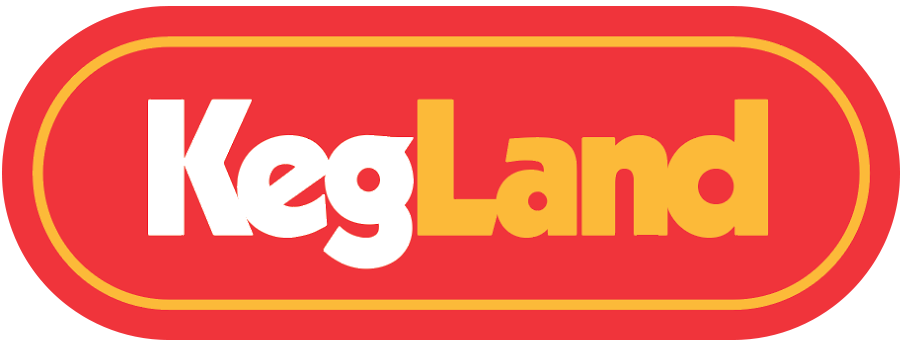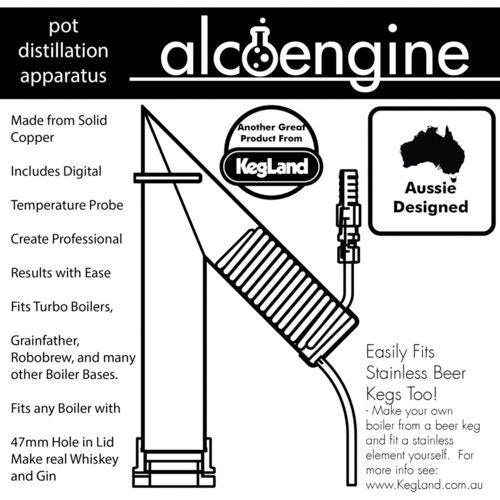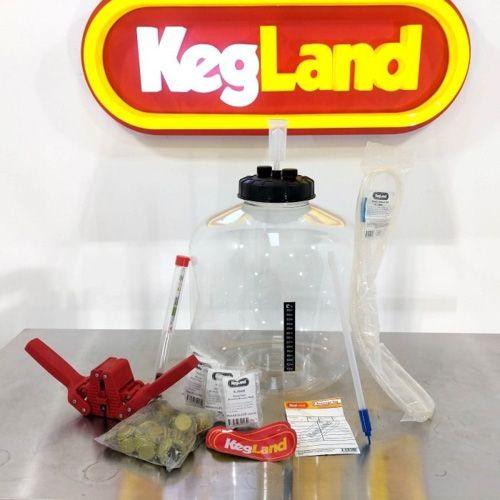Homebrew Keg Dispensing – A Beginner's Guide
There’s a very good reason we are called KegLand, not Bottleland.
For a long time in the homebrew community, bottle was just the de facto method to get beer out of the fermenter and into a vessel.
There is another way. And quite possibly, it is easier and more affordable than you may think!
Kegging your beer, having beer on tap and ready to pour is well within the reach of the everyday homebrewer. There are many, many advantages, and practically no downsides.
The Advantages Of Kegging
The upside to kegging is enormous.
You can transfer a finished beer to a keg in less time than it takes to fill the equivalent amount of bottles. Far less time when you factor in cleaning and sanitizing all the bottles, compared to one keg.
Not only that, but using a pressure capable fermenter – like any one of our FermZilla range, for example, you can transfer beer under pressure and oxygen free. This has many clear and proven benefits – freshness, longevity and perhaps most importantly the ability to lock in all that delicious hop aroma you have worked so hard to preserve.
But it doesn’t stop there!
We all know the patience game. You’ve waited for that delicious brew to ferment out. You’ve carefully washed, sanitized and bottled. Then what?
More waiting. Oh the joy of bottle conditioning. Look, bottle conditioning absolutely has a place in this wonderful hobby, but in the vast majority of cases, when a beer is done, it just needs to be carbonated and enjoyed.
When kegging, carbonating can be done in a matter of minutes, or a few hours if you prefer. We will cover the different methods of force carbonating in another post, but it is as simple as chilling your keg and adding CO2. My personal routine generally means kegging the night before, and having beer that is ready to drink when I finish work the next day.
If you want to take a few beers to a social occasion, just fill them from the tap. And when hosting a social gathering, having beer on tap is one of the biggest possible party pleasers.
What You Will Need
So, let’s talk about the nuts and bolts.
There’s two basic approaches to get into kegging.
The three constants are kegs, CO2 cylinders, and regulators. At Kegland, we have you covered.
The 19L corny kegs are the de facto homebrew standard – we make our own. You can also get smaller 9.5L versions, or any of a range of mini kegs to suit any budget and fridge size.
You will need a fridge.
Absolutely the easiest option is to get a dedicated kegerator. This is a fridge designed to hold and chill kegs, with custom inlets and outlets for you gas and beer line. You’ll need to learn about disconnects and line pressures, a few other things.
Or, you can check out our awesome Kegerator Builder and get an entire ready to go system in just a couple of clicks.
The basic setup is pretty simple, if you choose to build your own system. You need a CO2 tank and regulator. This will attach to some tubing, and then to a disconnect for the gas side of you keg. CO2 goes in to both carbonate and then pressurize the head space. On the liquid side, another disconnect gets attached to the beer line, which then goes to your tap.
Gas goes in one post, delicious beer flows out the other. Simple and tasty!
Getting Your Beer Into The Keg
I’m going to discuss closed transfers here. This assumes you have a pressure capable fermenter, and really, given the low cost and incredible flexibility of a unit like the 30L All Rounder Pressure Brewing Kit, there’s no reason to not have one.
Start by cleaning and sanitizing the keg. A good soak in PBW and a thorough rinse takes care of the cleaning side. Removing and soaking the posts every now and then is good practice too.
Then, fill the keg with 19L of StellarSan, correctly diluted.
Using CO2, push the StellarSan out of the keg into another, empty keg. Using a Spunding Valve (like one of our awesome BlowTies!) to control the pressure on the receiving keg is the easiest way to do this.
Leaving the empty keg hooked up to the gas, purge it a couple of times by pulling the PRV. You now have a clean, empty, oxygen free and sanitized keg.
Now, simply attach a liquid line from the liquid out of the fermenter, to the liquid post of the keg. Using the spunding valve again, ensure that there is less pressure in the keg than in the fermenter, and watch in wonder as the delicious beverage transfers into the keg, untouched by oxygen, right before your eyes.
Take a moment to think about the number of times the tip fell off your bottling wand and had to be fished out of a bottle, and s=ask yourself why you didn’t get into this sooner…
Carbonation And Dispensing
I touched on this before, but carbonation is a function of temperature, time and pressure, with a side order of volume. There are many carbonation charts readily available online. You will quickly find a routine that works for you. I routinely keg on a week night, chill the keg overnight then hook it up to CO2 at 50psi before work. After work, I can turn the gas down to serving pressure of 10-12psi, purge the headspace and pour away!
It really is that simple. Just remember – the beer has to be cold for the CO2 to dissolve into solution, and to turn the gas down and purge the headspace whenever you force carbonate.
TL:DR - Chill the keg to ~2°C, hook it up to CO2 at 10-12psi and wait for a week - its exactly that easy!
Equipment Basics
Absolutely the cheapest and easiest way to get into keg dispensing is to find a cheap fridge (you may even have one that you can re-purpose). Once you have a fridge that you can put a keg in you are good to go with just a small outlay on equipment!
Worried that your friudge is too small! Fear not. We have a range of keg sizes to suit. Check out the 4L OXEBAR Kegs and the 8L OXEBAR Kegs if you are pushed for size.
Have the room but want to save some money! Fair call - the 20L OXEBAR kegs are just the ticket.
There are also a range of stainless mini kegs in various sizes that may also suit.
Once you have the keg and the fridge, you need CO2, a regulator and a tap of some kind. CO2 pressirises and carbonates - basically we use this pressure to push the beer out of the keg and through the tap on demand.
Check out this beginner kit – CO2, a regulator and a Bronco Tap. Put the keg in any fridge you want and you are good to go. We also have a version with a Pluto Gun that is a little more rugged.
If you want to move into a dedicated kegging setup, then you can't go past a kegerator!
Our own range of Series X Kegerators are, of course, a fantastic and easy way to get into kegging, and much more affordable than you may think. They can hold up to 4 corny kegs, so you can have as much variety as you want.
If you really want to impress your friends, check out the Grand Deluxe kegerators. These beauties are form and function. The two door model will hold up to 12 corny kegs, and they are a striking slab of stainless steel and glass.
Sounds Good! Sign Me Up!
Here at Kegland we have everything you might need to get started on your kegging journey. Hopefully you have learnt enough to get started. If you have more questions, feel free to call or email - our customer service team is more than happy to answer any questions you may have.
If you are ready to go, jump onto the website and check out the links.
Happy brewing!



